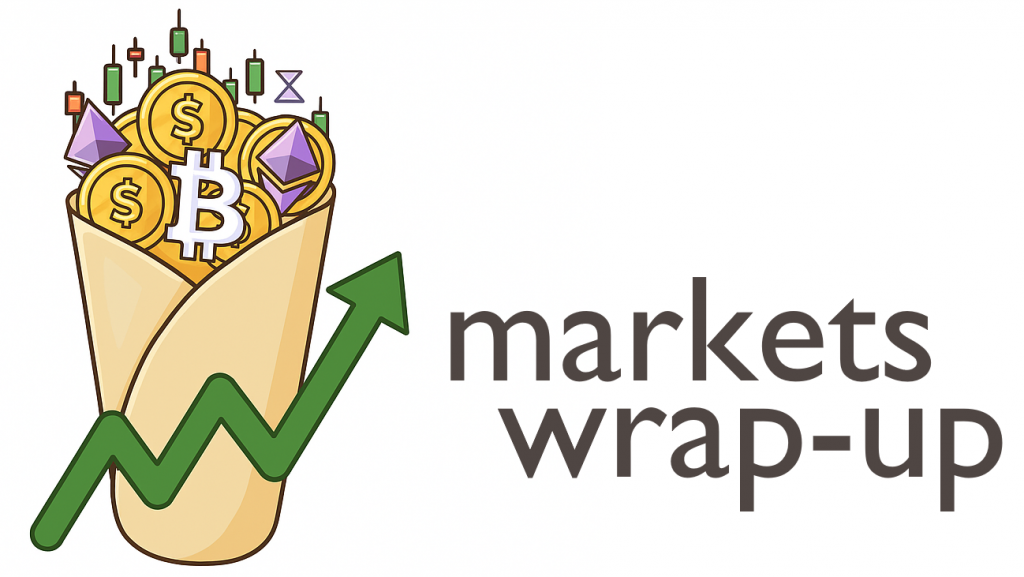Stocks
Market movements:
U.S. equities posted modest gains over the week as investors digested mixed macro data and pushed up expectations for eventual Fed easing. The S&P 500 (+1.6% w/w), the Nasdaq Composite (+2.0% w/w) and the Dow Jones Industrial Average (+1.1% w/w) all finished the week higher, with technology and AI-linked names leading the advance while many cyclicals lagged. Record or near-record closes in the major indices late in the week reflected a market that is willing to price easier policy even as inflation remains a concern.
Sector and single-name drivers:
Broadcom (+~13% w/w) was among the high-profile winners after the company issued optimistic guidance tied to AI infrastructure demand, sparking an outsized single-stock move that lifted parts of the tech sector. Conversely, consumer discretionary was pressured after Lululemon (-~17.5% w/w) reduced its forecast, weighing on the group and reminding investors that company-level disappointments can derail sector momentum. Nvidia (+~6–7% w/w) and other chip/AI infrastructure names continued to trade strongly, sustaining the narrative that a narrow cohort of mega-caps is driving much of the market’s gains.
Fixed-income:
Treasury yields moved lower across the curve as labor-market datapoints injected uncertainty about the Fed’s timing for rate cuts; the 10-year Treasury (~4% area) eased during the week. Lower nominal yields — and a decline in real yields in particular — helped support long-duration growth names, while volatility around the data releases kept the tape choppy intraday. The bond market’s pricing of policy remains the central cross-asset determinant for equity leadership going forward.
Precious metals, industrial metals
Precious-metals rally:
Precious metals were the clear beneficiaries of the risk-repricing and a pullback in real yields. Gold (+~1–2% w/w) rallied as investors sought a hedge against sticky inflation and growing uncertainty about the economic outlook. Silver (+~3–6% w/w) outperformed gold in percentage terms, reflecting its dual role as an industrial input and a precious metal, and ETF flows into both metals helped amplify the move.
Industrial metals:
Industrial metals were generally more subdued than precious metals, trading in a narrow range as demand signals from manufacturing and construction remained mixed. Copper (flat to slightly up w/w) and Aluminium (flat to slightly up w/w) showed modest gains in pockets but lacked the clear, directional momentum seen in the gold complex. The industrial metals complex will remain sensitive to China demand data and any supply-side headlines tied to energy transition investments.
Crypto Asset
Bitcoin:
Bitcoin (BTC, modestly up w/w) spent the week trading near the high-hundred-thousand dollar area, holding firm as macro markets priced easier policy. BTC displayed relatively muted volatility compared with earlier episodes, acting as the primary barometer of crypto market risk appetite while ETF flows and institutional positioning continued to matter for direction.
Ethereum:
Ethereum (ETH, modestly up w/w) outperformed many altcoins on renewed staking interest and continued Layer-2 activity. ETH’s move was supported by on-chain developments and steady institutional interest in proof-of-stake yield alternatives; in the short run the token tracked broad risk sentiment and relative demand for crypto yield products.
XRP:
XRP (XRP, modestly up w/w) recorded steady gains but did not dominate headlines; momentum reflected a mix of ongoing institutional narrative and periodic partnership or product announcements. XRP’s price action this week reinforced a view that improvements in regulatory clarity and clear use-case messaging are incremental positives rather than explosive catalysts.
Solana:
Solana (SOL, mixed to modestly up w/w) saw pockets of strength tied to ecosystem fundings and developer activity, but SOL’s performance was uneven across the week. Renewed interest in on-chain applications and some optimistic project news offered episodic support while broader macro flows determined the overall tone.
Cardano:
Cardano (ADA, modestly up w/w) advanced modestly as incremental developer progress and upgrades kept sentiment constructive. ADA’s move was consistent with a market that is re-allocating to select protocol narratives while remaining sensitive to macro liquidity.
Broad crypto context:
Across tokens, the week’s crypto gains were driven more by macro tailwinds — lower real yields and a tentative easing of policy expectations — than by idiosyncratic, token-specific news. Institutional flows, ETF dynamics and regulatory clarity continue to set the tempo for the largest market moves.
US economic data
Inflation prints:
August’s Consumer Price Index showed an uptick relative to the prior month, leaving headline inflation at roughly 2.9% year-over-year and core inflation near 3.1% year-over-year. The data underscored that inflation remains above the Fed’s 2% target and that disinflation is continuing but uneven across categories.
Labor-market signals:
The headline labor prints were notably soft: nonfarm payrolls showed only about +22,000 jobs added in August and the unemployment rate held around 4.3%. Moreover, initial jobless claims rose to roughly 263,000, the highest weekly level in several years. The combination of payroll weakness and rising claims provided evidence that the labor market is loosening — a critical input for monetary policy deliberations.
Market reaction (rates & cross-assets):
Bond markets priced in more chance of easier policy as the labor prints undercut the narrative for sustained tightness; the 10-year Treasury (~4% area) declined and real yields compressed, contributing to positive returns in long-duration equities and inflows into gold. However, the persistence of above-target inflation kept investors cautious that the Fed’s path to cuts could be gradual and conditional.
Outlook for the coming week
Near-term policy calendar and data to watch:
Over the coming week, markets will continue to parse incoming U.S. data that could either reinforce or mitigate the week’s shift in Fed expectations. Key releases to monitor include August retail sales, industrial production, housing starts, and the usual weekly jobless claims series. These prints will help markets assess whether consumer demand and manufacturing momentum remain resilient or whether the soft labor signals persist and broaden.
Corporate earnings calendar:
A handful of corporate reports should provide useful, real-time reads on demand and supply dynamics. Notably, logistics and consumer names — such as FedEx (FDX), General Mills (GIS), Darden Restaurants (DRI), and Lennar (LEN) — will offer insight into freight activity, consumer discretionary spending, restaurant traffic and housing demand, respectively. Outright beats in these names would support the cyclical recovery narrative; misses could re-ignite rotations toward defensive sectors.
Macro risks and catalysts:
The biggest risk to the current market posture is an upside inflation surprise that forces a repricing of policy and a jump in real yields; that outcome would likely rotate the market away from long-duration growth and toward cyclicals and value. Conversely, a clear confirmation of labor-market softness together with easing inflation prints would strengthen the case for near-term rate cuts and likely extend the rally in growth and precious metals.
Crypto and commodities:
In crypto, attention will remain on ETF flows, major exchange announcements and any regulatory developments that could alter institutional access. For commodities, geopolitical developments or incremental data out of China on manufacturing could create divergence between industrial metals (sensitive to growth) and precious metals (sensitive to policy and real yields).
Overall tactical view:
Absent a material inflation surprise, the tactical bias over the next several trading sessions favors risk assets — especially large-cap tech and AI-exposed names — while precious metals and selected cryptos are likely to remain attractive hedges. Positioning should respect volatility risk given the compressed time between now and the next major Fed decision window, and portfolio managers may wish to balance duration exposure with select cyclical re-entries depending on upcoming data.


